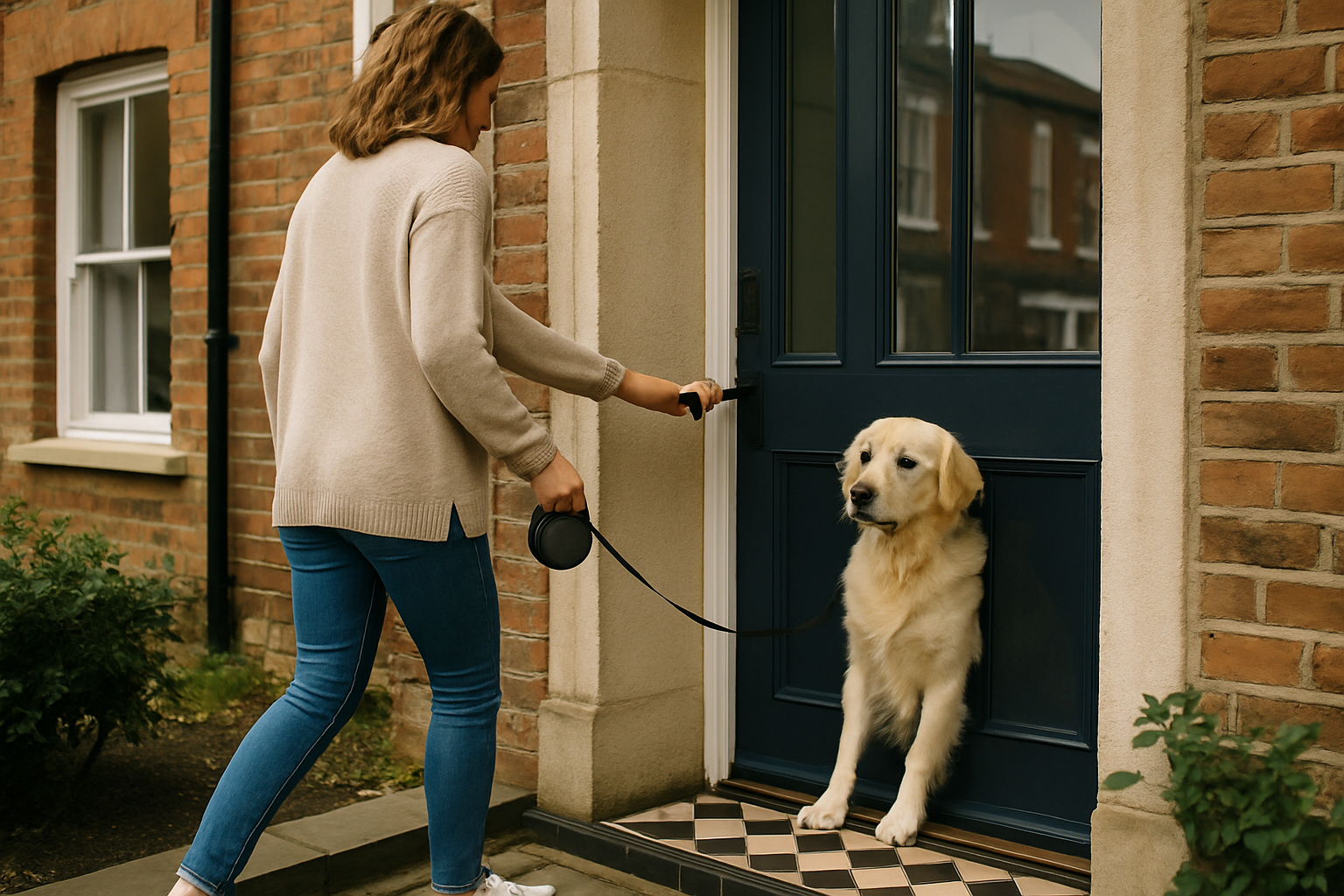Understanding what your dog is feeling
dog separation anxiety can creep into daily life, but there is plenty you can do to help your dog feel safe and settled. At PawsGuide, we see worried dogs every week, and the good news is that with patient practice most families see real progress. Your dog is not being stubborn or dramatic. They are panicking because the person they rely on has gone. If we treat that fear kindly, and build new habits at a gentle pace, confidence grows. Think of it as teaching your dog that alone time is predictable, safe and temporary.
Spot the signs early
Not every noisy dog is anxious, and not every silent dog is relaxed. Stress can show up as pacing, panting, drooling, howling, barking, scratching at doors, toileting indoors, or even refusing food once you leave. Some dogs go very still and watch the door like a hawk, which is easy to miss. Film short absences on your phone to get the clearest picture. If you see signs within the first few minutes of leaving, that points strongly to separation worries. Speak to your vet first to rule out pain or tummy upsets, since health and behaviour are closely linked.
Set the stage before you leave
Small changes add up. Give a calm walk or sniffy garden time to take the edge off, then offer water and a chance to toilet. Close curtains if street activity winds your dog up, and switch on gentle background sound such as talk radio. That steady murmur can mask sudden hallway noises. Make the resting spot cosy and consistent. A baby gate can be kinder than a shut door, since it allows your dog to see a little of the world while staying safe. Keep prized chew items for alone time only, so they carry extra value. 🐶
Make goodbyes boring
Big farewells often make things worse. Keep arrivals and departures low key. Pop your shoes on, pick up keys, then potter about for a minute so these cues stop predicting that you will vanish. Practise tiny out-of-sight moments inside the home, like stepping into the loo and back out, while you breathe slowly and speak in a normal tone. If your dog stays settled, drop a little treat on the bed as you return. If they get up, you went too far. Aim for success, not drama.
Enrichment that keeps brains busy
Food puzzles, safe chews and scent games help your dog relax into a natural rhythm. Stuff a rubber toy with part of their meal and a smear of xylitol-free peanut butter, then freeze it so it lasts. Scatter a handful of kibble across a snuffle mat. Rotate toys so novelty stays high. Avoid leaving brand new items unsupervised until you know your dog chews safely. A short training session before you go can also take the edge off, since learning is tiring in the best way. The aim is a gentle wind-down, not a frantic hour of fetch.
Tiny training steps that build confidence
If your vet rules out health concerns, you can treat dog separation anxiety with gradual desensitisation. Start with very short absences that your dog can handle without worry, even if that is only five seconds with you behind the front door. Return before they panic, praise softly, and repeat. Stretch the time in small jumps. Mix easy reps with slightly harder ones, so the pattern feels predictable. If your dog fusses, shorten the next trial. It is normal to progress in wobbly lines, not a straight climb. Consistency beats intensity. Keep a simple log to track what worked, and celebrate the calm wins. 🙂
When to seek extra help
There is no shame in asking for support. A qualified behaviour professional can design a tailored plan, coach your timing and spot tiny stress signals you might miss. They can also help if anxiety comes with other issues like barking at visitors or noise worries. If your dog struggles for more than a few minutes or shows signs of distress despite careful practice, bring in a pro sooner rather than later. The right tweaks save everyone time, money and tears, and help your dog feel safe faster.
If you need extra support or additional resources, visit our ‘Useful Links’ page for further guidance: https://pawsguide.co.uk/useful-links/.

